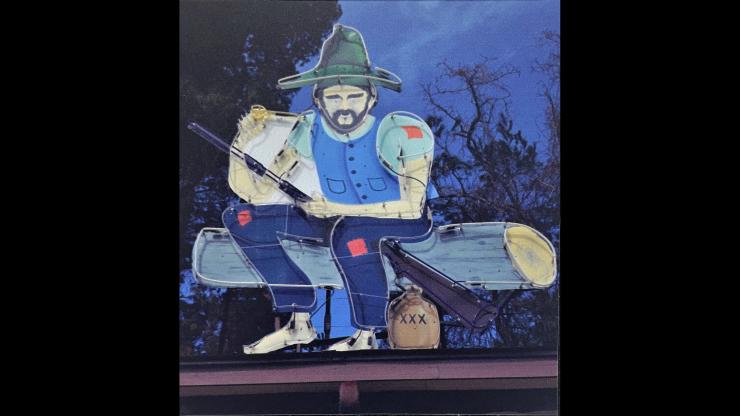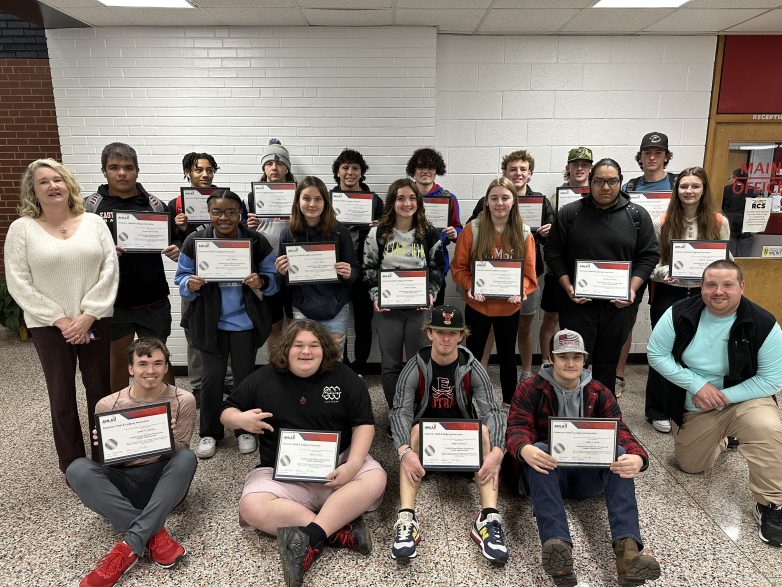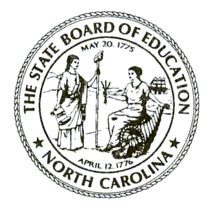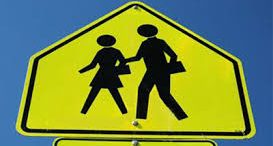An exhibit examining the myths and misconceptions behind the mountain “hillbilly” stereotype will open Saturday, Oct. 1, at the Mountain Gateway Museum & Heritage Center (MGM) in Old Fort.
“Hillbillyland: Myth & Reality of Appalachian Culture,” will run through May 7, 2023, at MGM, 24 Water Street, in Old Fort. It is on loan from the Western North Carolina Historical Association in Asheville.
The hillbilly stereotype is rooted deep in the history of the United States. It started in the 19th century with the Southwestern Humor Tales’ accounts of excess, violence, and “backwards” behavior related to moonshiners. National newspapers, such as “Harper’s,” perpetuated these stories and influenced how the nation saw Appalachian life.
Popular culture latched on to these stories and produced shows such as “Ma and Pa Kettle,” “Thunder Road,” “The Beverly Hillbillies,” and “Hee-Haw” to capitalize on the public’s oversimplified, and sometimes negative, view of Appalachian culture.
Mountain people sometimes fueled the stereotype, especially when it profited them. This included musicians acting like rubes for fans, residents catering to the tourist by acting like “real mountain people,” and artists playing “simple” to sell their products.
Hillbillyland explores how the hillbilly stereotype thrives in today’s popular culture. The power, prevalence, and persistence of the hillbilly stereotype are explored through photography, poetry, and short prose.
These writings and images are set inside the themes of religion, music, arts and crafts, moonshine, and isolation. Designed not to extol the hillbilly stereotype, these pieces seek to challenge and complicate them while encouraging the visitor to think about the reality, complexity, and nuances of mountain life.
Photographs in the exhibition include historical ones by Bayard Wooten, George Masa, and Doris Ulmann, and modern photographers Rob Amberg, Tim Barnwell, and Don Dudenbostel, as well as images from the University of North Carolina at Asheville’s Special Collections and other regional collections. Most of these photographers come from outside of the region and reflect the fascination with the region and the people who live in its deepest coves and hollows.
The poetry and prose in the exhibit were written by individuals with deep roots in Western North Carolina. They include the late Jim Wayne Miller, Fred Chappell, Robert Morgan, Michael McFee, Jane Hicks, Kathryn Stripling Byer, Ron Rash, and Wayne Caldwell.
For more information about Hillbillyland, contact Jesse Bricker at 828-668-9259 or jesse.bricker@ncdcr.gov or visit Mountain Gateway Museum’s website at www.mgmnc.org.
_______________________________________________________
About Mountain Gateway Museum
A regional branch of the North Carolina Museum of History in Raleigh, the Mountain Gateway Museum & Heritage Center (MGM) is the westernmost facility in the NC Department of Natural & Cultural Resources’ Division of State History Museums.
Nestled at the foot of the Blue Ridge Mountains along the banks of historic Mill Creek in downtown Old Fort (McDowell County), the museum uses artifacts, exhibitions, educational programs, living history demonstrations, and special events to teach people about the rich history and cultural heritage of the state’s mountain region, from its original inhabitants through early settlement and into the 20th century.
As part of its education outreach mission, MGM also assists nonprofit museums and historic sites in 38 western NC counties with exhibit development & fabrication, genealogical research, photography archives, traveling exhibitions, and consultations. For more information, visit the museum’s website at www.mgmnc.org or call 828-668-9259.
About the North Carolina Department of Natural and Cultural Resources
The N.C. Department of Natural and Cultural Resources (NCDNCR) is the state agency with a vision to be the leader in using the state’s natural and cultural resources to build the social, cultural, educational and economic future of North Carolina. NCDNCR’s mission is to improve the quality of life in our state by creating opportunities to experience excellence in the arts, history, libraries and nature in North Carolina by stimulating learning, inspiring creativity, preserving the state’s history, conserving the state’s natural heritage, encouraging recreation and cultural tourism, and promoting economic development.
NCDNCR includes 27 historic sites, seven history museums, two art museums, three science museums, three aquariums and Jennette’s Pier, 41 state parks and recreation areas, the N.C. Zoo, the N.C. Symphony Orchestra, the State Library, the State Archives, the N.C. Arts Council, the African American Heritage Commission, State Preservation Office and the Office of State Archaeology, and the Division of Land and Water Stewardship. For more information, please visit www.ncdcr.gov



